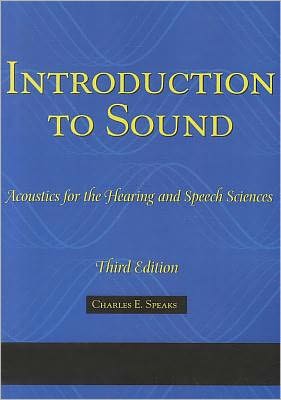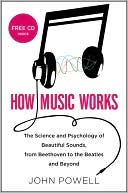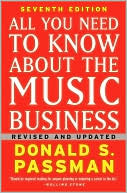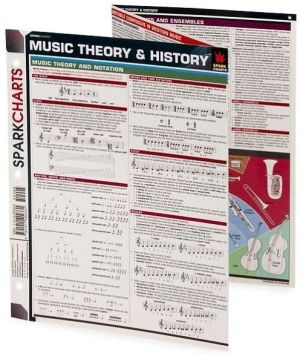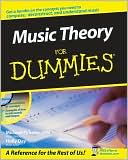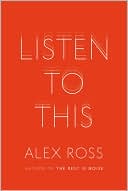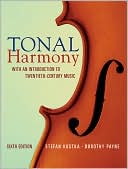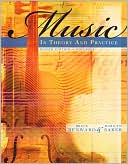Introduction To Sound: Acoustics for the Hearing and Speech Sciences
This powerful text continues with the same fundamental aim as the previous two editions to not present, but to teach the fundamental concepts of acoustics to students in the speech-language and hearing science. In addition to relocating revised practice problems and answers to a newly created Course Notes and Workbook for Introduction to Sound, the third edition also introduces new features. Supplements Course Notes and Workshop for Introduction to Sound 1-56593-980-8 - 176 pages, softcover,...
Search in google:
This powerful text continues with the same fundamental aim as the previous two editions to not present, but to teach the fundamental concepts of acoustics to students in the speech-language and hearing science. In addition to relocating revised practice problems and answers to a newly created Course Notes and Workbook for Introduction to Sound, the third edition also introduces new features. David J. Rothman This third edition book provides information on the concepts of acoustics for those specializing in the speech-language-hearing sciences. As stated in the preface to the first edition, the purpose is to teach the fundamental concepts of acoustics to those involved in the speech-language-hearing sciences. These are worthy objectives. I am not sure that the author's stated objectives are valid, as this book goes beyond an introduction and the fundamental concepts. After reading the book I am not sure who the author is addressing. It may be the advanced student preparing for a career as a speech-language pathologist or audiologist, or an architectural acoustician, engineer, or a pure psycho-acoustician. Does a speech language pathologist or an audiologist have to know about angular velocity to understand phase differences and the effect of these differences on perception? Perhaps the lack of audience focus typifies the problem those of us in the field face: are speech and hearing scientists engineers, psycho-acousticians, or physicists, or a combination of all of these? Certainly, strong background in calculus and physics would be helpful in getting everything there is to get out of this text. If the audience were truly those heading toward the professions of speech-language pathology and/or audiology, I would have preferred that the discussions of sine wave or complex wave summations or phase differences end up by discussing the effect of the different summations or differences on perception. It is important to teach about logs and antilogs before discussing the decibel and to fully describe sine waves before discussing complex waves. However, I would have preferred a fulldiscussion of impedance in one place rather than having to look it up in the index and turn to three different parts of the text to learn all one would want to know about impedance. I did like the "Frequently Misunderstood Concepts" found at the end of each chapter. The author is not only competent to discuss the various topics presented in the text, he does so with clarity and understanding. I am just not sure for whom this book is intended. It certainly is not for the average undergraduate or even average graduate student in the fields of speech-language pathology or audiology.
PrefacePreface to the Second EditionAcknowledgmentsCh. 1The Nature of Sound Waves1Ch. 2Simple Harmonic Motion47Ch. 3Logarithms and Antilogarithms103Ch. 4Sound Intensity and Sound Pressure: The Decibel131Ch. 5Complex Waves185Ch. 6Resonance and Filtering217Ch. 7Distortion267Ch. 8Sound Transmission291References335Appendix: Alphabetical Listing of Selected Equations337Subject Index341
\ From The CriticsReviewer: David J. Rothman, PhD(Columbia University College of Physicians and Surgeons)\ Description: This third edition book provides information on the concepts of acoustics for those specializing in the speech-language-hearing sciences.\ Purpose: As stated in the preface to the first edition, the purpose is to teach the fundamental concepts of acoustics to those involved in the speech-language-hearing sciences. These are worthy objectives. I am not sure that the author's stated objectives are valid, as this book goes beyond an introduction and the fundamental concepts.\ Audience: After reading the book I am not sure who the author is addressing. It may be the advanced student preparing for a career as a speech-language pathologist or audiologist, or an architectural acoustician, engineer, or a pure psycho-acoustician. Does a speech language pathologist or an audiologist have to know about angular velocity to understand phase differences and the effect of these differences on perception? Perhaps the lack of audience focus typifies the problem those of us in the field face: are speech and hearing scientists engineers, psycho-acousticians, or physicists, or a combination of all of these? Certainly, strong background in calculus and physics would be helpful in getting everything there is to get out of this text. If the audience were truly those heading toward the professions of speech-language pathology and/or audiology, I would have preferred that the discussions of sine wave or complex wave summations or phase differences end up by discussing the effect of the different summations or differences on perception.\ Features: It is important to teach about logs and antilogs before discussing the decibel and to fully describe sine waves before discussing complex waves. However, I would have preferred a full discussion of impedance in one place rather than having to look it up in the index and turn to three different parts of the text to learn all one would want to know about impedance. I did like the "Frequently Misunderstood Concepts" found at the end of each chapter.\ Assessment: The author is not only competent to discuss the various topics presented in the text, he does so with clarity and understanding. I am just not sure for whom this book is intended. It certainly is not for the average undergraduate or even average graduate student in the fields of speech-language pathology or audiology.\ \ \ \ \ David J. RothmanThis third edition book provides information on the concepts of acoustics for those specializing in the speech-language-hearing sciences. As stated in the preface to the first edition, the purpose is to teach the fundamental concepts of acoustics to those involved in the speech-language-hearing sciences. These are worthy objectives. I am not sure that the author's stated objectives are valid, as this book goes beyond an introduction and the fundamental concepts. After reading the book I am not sure who the author is addressing. It may be the advanced student preparing for a career as a speech-language pathologist or audiologist, or an architectural acoustician, engineer, or a pure psycho-acoustician. Does a speech language pathologist or an audiologist have to know about angular velocity to understand phase differences and the effect of these differences on perception? Perhaps the lack of audience focus typifies the problem those of us in the field face: are speech and hearing scientists engineers, psycho-acousticians, or physicists, or a combination of all of these? Certainly, strong background in calculus and physics would be helpful in getting everything there is to get out of this text. If the audience were truly those heading toward the professions of speech-language pathology and/or audiology, I would have preferred that the discussions of sine wave or complex wave summations or phase differences end up by discussing the effect of the different summations or differences on perception. It is important to teach about logs and antilogs before discussing the decibel and to fully describe sine waves before discussing complex waves. However, I would have preferred a fulldiscussion of impedance in one place rather than having to look it up in the index and turn to three different parts of the text to learn all one would want to know about impedance. I did like the "Frequently Misunderstood Concepts" found at the end of each chapter. The author is not only competent to discuss the various topics presented in the text, he does so with clarity and understanding. I am just not sure for whom this book is intended. It certainly is not for the average undergraduate or even average graduate student in the fields of speech-language pathology or audiology.\ \ \ BooknewsA textbook for an undergraduate course in acoustics for students in the speech-language-hearing sciences. Those with a solid grounding in physics and mathematics should have no trouble; those without will have to work harder to grasp the concepts. Revised from the 1992 edition based on teacher's feedback and statistical studies of scores on the questions; also includes a new chapter of frequently misunderstood concepts. Annotation c. Book News, Inc., Portland, OR (booknews.com)\ \ \ \ \ 4 Stars! from Doody\ \
